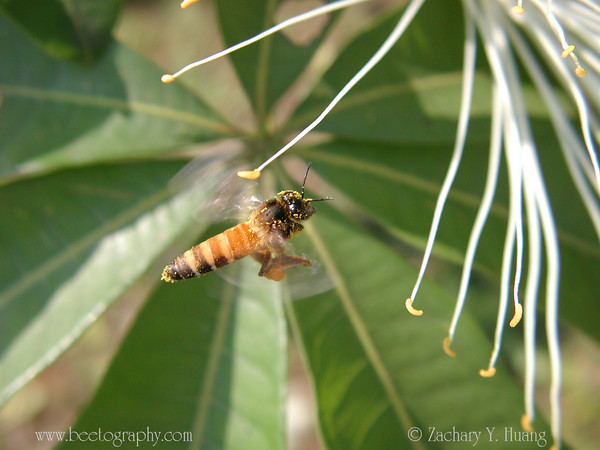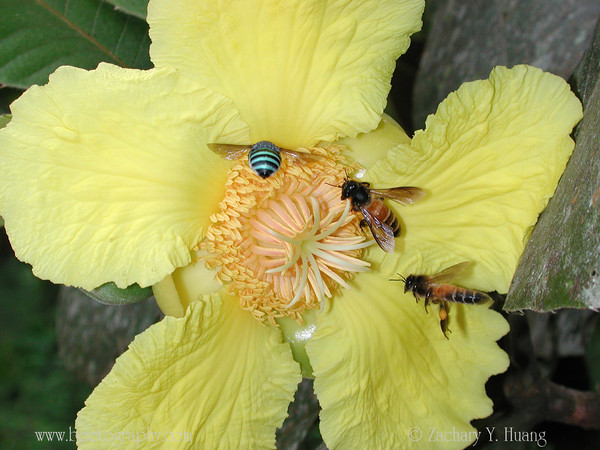Our most recent paper: http://dx.plos.org/10.1371/
MSU news: http://news.msu.edu/story/promiscuous-queen-bees-maintain-genetic-diversity/
A nice blog about it: http://www.earthtimes.org/nature/giant-polyandrous-bees/1932/
Photos of Apis dorsata by yours truely: http://www.beetography.com/Honey-Bees/3-Giant-Honey-Bees/
I cannot help to post a few of these amazingly beautiful bees now.
Bees from Xishuangbanna, Yunan, China. These are the same color as Apis dorsata from Thailand or Nepal. Taken 2001, Nikon coolpix 990 (3.2 megapix point and shoot).
1. Apid dorsata foraging on a Salix.

2. Apis dorsata foraging on an Ilex.

3. A dorsata hovering on a Pichara flower.

4. Two dorsata and one anthrophoridae foraging on a delenia flower.

The black form of Apis dorsata. Previous recognized as subsepecies (Apis dorsata breviligula Maa), now it is considered as another species (Apis breviligula) . Taken 2004, in the Phillipines, same camera as above.
5. Watching these hornets like bees can be mesmerising! I must be pretty close to the bees with a 3x zoom on that camera (I believe).

6. Dr. Debra Smith (Univ of Kansas) and Dr. Woyke (Poland) watching the bees upclose. The colony was in the field of a type squash (chayote).

7. I was chosen (chased!) by this bee who stung me and I could not help to shoot her between my fingers…here you can see large she is!

8. Driving the bees away using a giant smoker. This is a different colony and Dr. Denis Anderson was trying to hunt for Tropilaepes.

The yellow form of Apis dorsata in Nepal. Taken with a Nikon D90. I was there volunteering for two weeks in 2006.
9. Apis dorsata foraging on Justicea.

10. A giant bee foraging on a type of citrus flowers (probably a type of gradefruit).

11. Head on toward my camera…

12. There was one colony at someone’s yard.

Zachary (posting from Fujian, China)